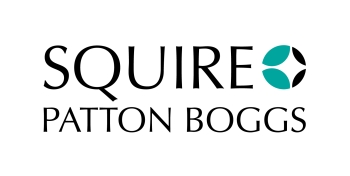Reform of the EU Trade Mark Framework
On 10 June 2015, the European Parliament, Council and Commission informally agreed to changes to the Trademark Directive 2008/95/ EC (Directive) and the Community Trademark Regulation 207/2009/ EC (Regulation). The reform of the current legislation is intended to foster innovation in the EU by providing accessible and efficient trade mark registration system in relation to costs, speed and legal certainty. Another of the EU’s main motivations was to provide further effective trade mark protection against counterfeit goods, notably those in transit through the EU’s territory.
Key Changes Under the EU Trade Mark Reforms
New Types of Trade Marks
The definition of trade marks has been extended to include non- traditional marks. This means that owners seeking to make trade mark applications will no longer be required to present their mark graphically, thus encouraging greater flexibility within the registration process.
Modified Terminology
Going forward, Community Trade Marks will be referred to as European Union Trade Marks and the Community Trade Mark Courts will also accordingly be renamed as the European Union Trade Mark Courts. The name of the Office for Harmonization in the Internal Market will be changed to European Union Intellectual Property Office.
One Class Per Fee Payment System
The current basic fee for Community trade mark application fees covers up to three classes of goods and services. The newly proposed fee schedule will set a separate class fee for each additional class following the first class. The intention is to make applications cheaper for businesses wishing to make single-class applications and to minimise broad claims for goods and services that are not essential to the application, thereby reducing “clutter”. The application fee will be payable on application as opposed to the previous one month grace period offered.
A Process of Harmonisation
The amended legislation offers a more harmonised approach to the registration of marks. Filing dates and the classification of goods and services will be harmonised across the EU. The rights of licensees for infringements of national marks will also be harmonised which will enable licensees (with the trade mark owner’s consent) to sue for the infringement of national marks. Changes to the Directive also harmonise administrative revocation and invalidity proceedings at national level which means that applicants will no longer have to opt for the more expensive court proceedings to cancel someone else’s mark.
Specifications of Goods and Services – IP-Translator
The amended legislation is intended to dispose of an issue arising from the now historical practice of filing applications for the so-called class headings with OHIM’s confirmation that this encompassed all goods or services in the class in question. Owners of registrations filed for class headings during the relevant period will have the opportunity to clarify the intended scope. This will restore a significant degree of clarity.
Goods in Transit
Presently, the majority of counterfeit goods in transit through the EU are not regarded as infringing; however the amended legislation will enable owners of trade marks registered in the EU to prevent the transit of infringing goods within the EU. This will prevent third parties from bringing counterfeit goods into the customs territory of the EU, regardless of whether they are intended for free circulation within the EU’s territory.
Importation by Consumers
The owner of a trade mark has the right to prevent businesses from importing counterfeit goods located outside the EU into the EU’s territory. The owner will be entitled to prevent the importation of infringing items even if only the seller of the goods acts for commercial purposes. This will be beneficial for consumers who purchase counterfeit goods over the Internet, as well as for the owners of massively counterfeited consumer brands.
Comparative Advertising
If a trade mark is used for comparative advertising and the requirements of the Comparative Advertising Directive are not met, the owner of the trade mark will be entitled to object to the use of their trade mark in this advertising.
Next Steps
The draft Directive and Regulation will need to undergo a process of legal and linguistic review before the formal adoption of the Council’s position at first reading. Following this, the drafts will be put to a vote in second reading at the plenary session of the European Parliament.
It is expected that the texts will be adopted by the European Parliament at the end of 2015 and that many of the provisions contained in the Regulation will come into effect within the following six-month period. Longer timescales are anticipated in relation to the Directive as a result of the three year transition period granted to member states to implement the provisions into the their national laws; member states even have seven years to implement the changes to revocation and invalidity proceedings into their national laws.





